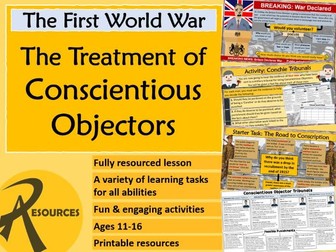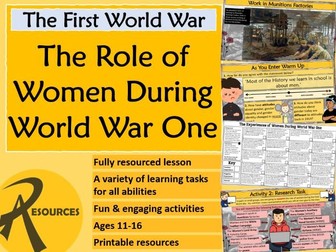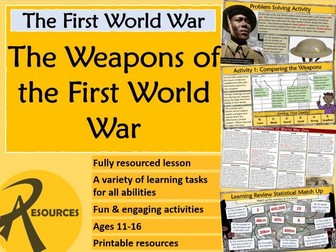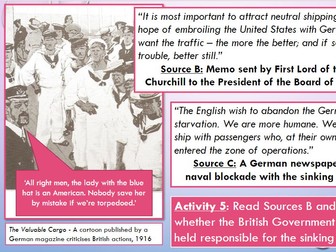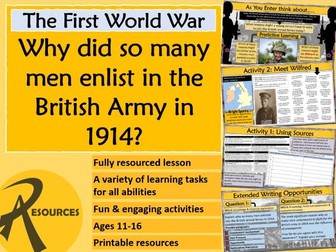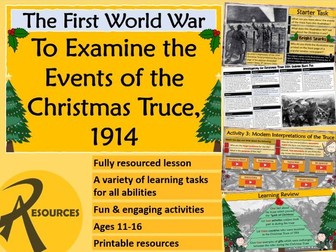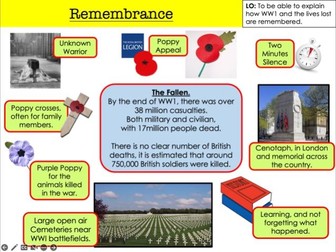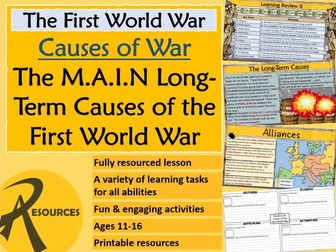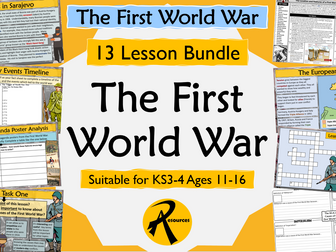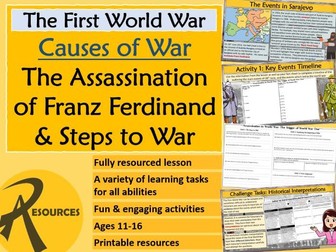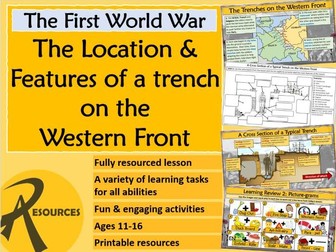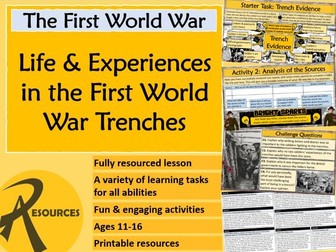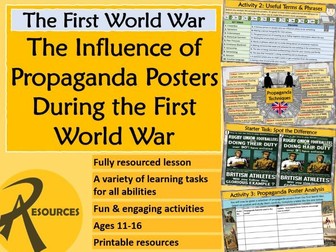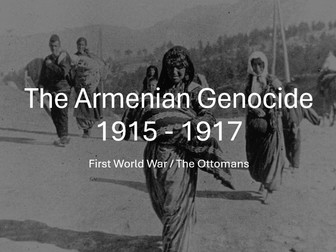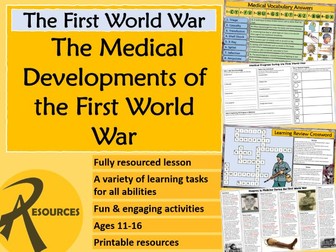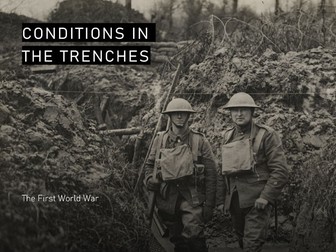Conscientious Objectors - First World War
<p><strong>In this lesson, students take a fascinating look into the way conscientious objectors were treated during the First World War. Students will find out why some men became conscientious objectors, what the public attitude was to conchies and finally examine four case studies to decide how they would punish the conscientious objectors from the past.</strong></p>
<p>This is a fully resources lesson which includes a warmup, starter task, engaging background information, various learning activities, challenge tasks and learning reviews.</p>
<p><strong>The lesson includes the following:</strong><br />
Slide 1: Title slide<br />
Slide 2: Outline of the main lesson aims<br />
Slide 3: As you enter warm up – War has been declared – would you volunteer? A selection of discussion questions linked to this modern day scenario.<br />
Slide 4: Starter Task 1: Data analysis – students have to interpret a graph which shows the decline in volunteer recruits by the end of 1915.<br />
Slide 5: Starter Task 2: Discussion and background information – why do you think there was a drop in recruitment by 1915?<br />
Slide 6: Background information about the Military Services Act, 1916<br />
Slide 7: Background information and match up activity – who were the different types of conscientious objectors?<br />
Side 8: Background information about the different types of CO.<br />
Slide 9: Source based activity based on the public attitudes towards COs.<br />
Slide 10-11: The treatment and punishments given to conscientious objectors.<br />
Slide 12-14: ‘Conchie Tribunal’ activity with two printable sheets<br />
Slide 15: Useful clips<br />
Slide 16: Challenge Tasks and Questions<br />
Slide 17-18: Learning Review Quiz – with answers revealed</p>
<p>I would be grateful if you could leave a review for the lesson if you feel the lesson is effective for you. Many thanks if you spend some of your valuable time doing this and your feedback is highly valued.</p>
<p>All images used in this lesson are in the public domain and are therefore copyright free at the time of publishing. Images which require attribution have been attributed in the notes section of each slide where the image appears. If you feel any errors have been made, please contact me at <a href="mailto:raschoolresources@gmail.com" target="_blank" rel="nofollow">raschoolresources@gmail.com</a> in the first instance to resolve any issues. My lessons are completed using PowerPoint and designed on widescreen formatting. Thank you.</p>
